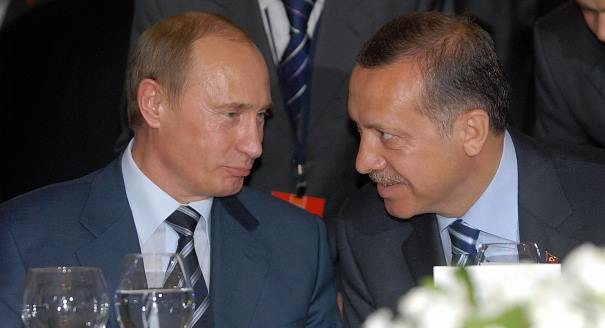There are a number of similarities between Turkey and Russia. Both used to have powerful empires, with much of their territory situated outside Europe. Both started their modernization late, in the second half of the nineteenth century, went through catastrophes of war and revolution at the beginning of the twentieth, and, as a consequence, had to reinvent themselves as nations.
Both are now going through a second wave of modernization of their economies, societies, and polities. Both are treated as outsiders by Europeans: the Turks, because they are many and Muslim; the Russians, because they are largely Christian Orthodox, and used to be Communist. And, crucially, both deserve the attention of the EU, which needs to rethink its relations with its two largest neighbors.
To many Russian observers, what is happening now in Istanbul’s Taksim Square has parallels to the Bolotnaya Square rallies in Moscow in 2011–2012. Turkey’s Prime Minister Recep Tayyip Erdoğan is loosely likened to Russian President Vladimir Putin.
Essentially, in both Turkey and Russia, highly vocal minorities are challenging the rule of leaders who can claim the support of around half of their respective populations. The minorities are urban, cosmopolitan, secular, and articulate, while the majorities consist of traditionalists in the broad sense of the word.
Yet the minorities are leaderless, unorganized, and their protests will surely dissipate after a while, whereas the majority-based leaders will probably be able to mobilize their supporters and carry the day at the ballot box. But matters won’t end there. Whichever way the present Turkish crisis is resolved, the divisions in society will not be bridged. Nor did that happen in Russia after it had “calmed down.” Turkey and Russia will remain deeply split societies, torn between tradition and modernity, though the balance between those two factors will keep changing.
For sure, there are vast differences between the two countries, societies, and leaders. Turkey is a democracy, however imperfect, while Russia is under authoritarian rule. In Turkey, Erdoğan’s government has implemented a number of important economic reforms. His support derives from the new power of the Anatolian middle class made up of private entrepreneurs. Turkey’s liberal and democratic institutions may be challenged or distorted, but they are still in place. Turkey is a key U.S. ally in NATO, is linked to the EU by a customs union, and still aspires to become a full EU member.
Putin’s priorities, by contrast, have been post-imperial consolidation and stabilization (rather than reform), rebuilding a strong centralized state, and restoring Russia to its “natural” great-power status. Still, for Putin as well as Erdoğan, the current protests are a perverse mark of success: they show how Russian and Turkish societies are maturing as they become more affluent.
The process, however, will be long, and the road tortuous. Crises such as the events in Turkey now are an essential part of this process, but they should not be allowed to degenerate into violence. It is important that street protests are converted into political action and channeled through the structured political process. It is important, too, that those who rely on elections for legitimacy—whether the elections are free and fair, or neither—realize that even an absolute majority at the polls does not mean absolute legitimacy for any action. Russia has awakened, Turkey has fought back, and neither will revert to where it was before people had started to stir.
This raises an issue for the Europeans. Their two biggest neighbors, in the east and southeast, are struggling to define their new identities as they go through fundamental societal changes. Both seek to play an important role vis-à-vis those countries that used to form part of their empires, and far beyond that. Russia has no interest in joining the EU; Turkey, which formally still wants to join, will probably never be allowed in.
If and when the Europeans decide that they want their union to become a strategic player, they will need to begin by crafting long-term strategies toward Turkey and Russia. This, however, requires that Europeans drop their long-held belief that the EU needs no foreign policy strategy and can simply rely on its unparalleled power of attraction. The era of magnetism that produced the EU’s phenomenal enlargement in the first decade of the twenty-first century is over. A more traditional, no-nonsense approach to foreign policy statecraft would be more effective.
With Turkey, the EU would do better by demonstrating more clarity and sincerity. If Turkish membership in the union is not a realistic option, what would be? With Russia, the EU would be wise to drop the notion that Russians are basically like other Eastern Europeans but just need more time to catch up. Russians are different, in the sense of prioritizing strategic independence, and the EU will need to build a partnership with them that takes that into account.





-1.png)

-2.png)